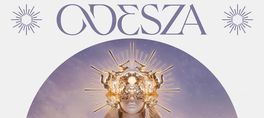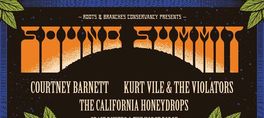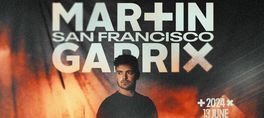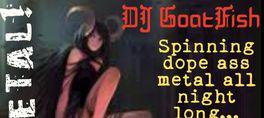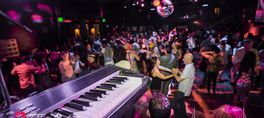Obon is the date often contained a nostalgic sentiments to the past life. It is believed as a day that the spirits of ancestors are supposed to revisit the household altars in Japan. People often return to ancestral family places and visit and clean their ancestors’ graves. The closest occasion in the US is Halloween that is the time dedicated to remembering the dead, including spirits and all the faithful departed believers. Also, in Mexico, they cerebrate Dia de los Muertos (Day of the Dead), and the families make altars and place offerings of food by placing a photo of the departed soul on the alter. Similar to the US and Mexico, through bon odori (dance) and other festive events on the day of obon, lived and dead bodies are symbolically mark and negotiate the border of life and death.
Tonight, by employing Japanese percussive, string, and brass instruments as well as singing and dancing, the bay area’s distinctive three groups will attempt to reproduce a modern Japan’s fragmenting night of obon.
To begin this celebration of our ancestors, a Taiko Ensemble, “Drum Revolution,” led by Kensuke Sumii will start us off by calling to our ancestors’ spirits in the afterlife. This will show the great vertical contrast between life and death, because Taiko refers to ground and heaven is so often associated with the sky.
Drum Revolution is a unique and innovative taiko group located in the San Francisco Bay Area and East Bay (San Mateo, Marin, and Contra Costa County). The group was founded in 2005 to promote, teach, and demonstrate taiko theory and practice.
Technically speaking, there are many percussion styles. Each form has its own unique rhythmic frame. For example, Afro-Cuban rhythms are rooted in the diverse rhythmic patterns of the Clave, Cascara, Guaguanco, Mambo, Macuta, Songo, and Mozambique.
Taiko has its own distinctive structural framework. Besides its creative Asian rhythmic patterns, Taiko includes a sequence of body movements called “TE,” a form of hitting the drum called “KATA,” and the skill to control both sound and body movement called “WAZA”. Drum Revolution is dedicated to articulating these qualities and creatively reformulating these rhythms and movements.
Currently, several classes are offered in El Cerrito, Orinda, Sausalito, and Belmont. Interested individuals and potential new members are encouraged to contact Drum Revolution at:
Email: [email protected]
Phone: 510-926-9780
____________________________
Shoko Hikage will then play the Koto (Japanese Harp) to speak to our ancestors’ souls and honor their memories. Shoko Hikage began playing koto at the age of three. Her first teacher was Chizuga Kimura of the Ikuta-ryu Sokyoku Seigen Kai in Akita Prefecture, Japan. From 1985, she received special training from the 2nd and 3rd IEMOTO Seiga Adachi (hereditary head master of the Ikura-ryu Sokyoku Seigen Kai). In 1988, Hikage graduated from Takasaki College with a major in koto music. She was then accepted as a special research student (uchideshi) at the Sawai Sokyoku In(Sawai Koto Institute) under Tadao and Kazue Sawai, where she received her master’s certificate (kyoshi). Hikage also completed a one-year intensive seminar at the Sawai Sokyoku In. In 1992, she moved to Honolulu, Hawaii to teach koto at the Sawai Kotot Kai Hawaii (Sawai Koto Institute Hawaii branch) and at the University of Hawaii. In 1997, she moved to San Francisco where she continues her concert and teaching activities. Hikage premiered Hyo-shin Na’s “Crazy Horse” for Korean Traditional Orchestra and Koto Solo with the National Orchestra of Traditional Instruments in Seoul, Korea in November, 2011. In the Bay Area, she also premiered Hyo-shin Na’s ” Night Procession of the Hundred Demons”, “Koto Music” and “Koto Ninano”. In 2014, Hikage gave a solo recital with a program devoted to Hyo-shin Na’s music for koto/bass koto at Buam Arts Hall in Seoul, Korea. The second CD of her playing of Na’s music was released on the Top Arts Label in February 2015.
____________________________
Finally, the group “Sakura Ren,” led by Keiji Ohshita will entertain our ancestors’s souls with some traditional Awa Odori dance. Regardless of age or gender, everybody can join in to Awa-Odori in their own way. The greatest part of Awa-Odori is its main philosophy that “everybody is welcome to dance and have fun together.”
show less
Tonight, by employing Japanese percussive, string, and brass instruments as well as singing and dancing, the bay area’s distinctive three groups will attempt to reproduce a modern Japan’s fragmenting night of obon.
To begin this celebration of our ancestors, a Taiko Ensemble, “Drum Revolution,” led by Kensuke Sumii will start us off by calling to our ancestors’ spirits in the afterlife. This will show the great vertical contrast between life and death, because Taiko refers to ground and heaven is so often associated with the sky.
Drum Revolution is a unique and innovative taiko group located in the San Francisco Bay Area and East Bay (San Mateo, Marin, and Contra Costa County). The group was founded in 2005 to promote, teach, and demonstrate taiko theory and practice.
Technically speaking, there are many percussion styles. Each form has its own unique rhythmic frame. For example, Afro-Cuban rhythms are rooted in the diverse rhythmic patterns of the Clave, Cascara, Guaguanco, Mambo, Macuta, Songo, and Mozambique.
Taiko has its own distinctive structural framework. Besides its creative Asian rhythmic patterns, Taiko includes a sequence of body movements called “TE,” a form of hitting the drum called “KATA,” and the skill to control both sound and body movement called “WAZA”. Drum Revolution is dedicated to articulating these qualities and creatively reformulating these rhythms and movements.
Currently, several classes are offered in El Cerrito, Orinda, Sausalito, and Belmont. Interested individuals and potential new members are encouraged to contact Drum Revolution at:
Email: [email protected]
Phone: 510-926-9780
____________________________
Shoko Hikage will then play the Koto (Japanese Harp) to speak to our ancestors’ souls and honor their memories. Shoko Hikage began playing koto at the age of three. Her first teacher was Chizuga Kimura of the Ikuta-ryu Sokyoku Seigen Kai in Akita Prefecture, Japan. From 1985, she received special training from the 2nd and 3rd IEMOTO Seiga Adachi (hereditary head master of the Ikura-ryu Sokyoku Seigen Kai). In 1988, Hikage graduated from Takasaki College with a major in koto music. She was then accepted as a special research student (uchideshi) at the Sawai Sokyoku In(Sawai Koto Institute) under Tadao and Kazue Sawai, where she received her master’s certificate (kyoshi). Hikage also completed a one-year intensive seminar at the Sawai Sokyoku In. In 1992, she moved to Honolulu, Hawaii to teach koto at the Sawai Kotot Kai Hawaii (Sawai Koto Institute Hawaii branch) and at the University of Hawaii. In 1997, she moved to San Francisco where she continues her concert and teaching activities. Hikage premiered Hyo-shin Na’s “Crazy Horse” for Korean Traditional Orchestra and Koto Solo with the National Orchestra of Traditional Instruments in Seoul, Korea in November, 2011. In the Bay Area, she also premiered Hyo-shin Na’s ” Night Procession of the Hundred Demons”, “Koto Music” and “Koto Ninano”. In 2014, Hikage gave a solo recital with a program devoted to Hyo-shin Na’s music for koto/bass koto at Buam Arts Hall in Seoul, Korea. The second CD of her playing of Na’s music was released on the Top Arts Label in February 2015.
____________________________
Finally, the group “Sakura Ren,” led by Keiji Ohshita will entertain our ancestors’s souls with some traditional Awa Odori dance. Regardless of age or gender, everybody can join in to Awa-Odori in their own way. The greatest part of Awa-Odori is its main philosophy that “everybody is welcome to dance and have fun together.”
Obon is the date often contained a nostalgic sentiments to the past life. It is believed as a day that the spirits of ancestors are supposed to revisit the household altars in Japan. People often return to ancestral family places and visit and clean their ancestors’ graves. The closest occasion in the US is Halloween that is the time dedicated to remembering the dead, including spirits and all the faithful departed believers. Also, in Mexico, they cerebrate Dia de los Muertos (Day of the Dead), and the families make altars and place offerings of food by placing a photo of the departed soul on the alter. Similar to the US and Mexico, through bon odori (dance) and other festive events on the day of obon, lived and dead bodies are symbolically mark and negotiate the border of life and death.
Tonight, by employing Japanese percussive, string, and brass instruments as well as singing and dancing, the bay area’s distinctive three groups will attempt to reproduce a modern Japan’s fragmenting night of obon.
To begin this celebration of our ancestors, a Taiko Ensemble, “Drum Revolution,” led by Kensuke Sumii will start us off by calling to our ancestors’ spirits in the afterlife. This will show the great vertical contrast between life and death, because Taiko refers to ground and heaven is so often associated with the sky.
Drum Revolution is a unique and innovative taiko group located in the San Francisco Bay Area and East Bay (San Mateo, Marin, and Contra Costa County). The group was founded in 2005 to promote, teach, and demonstrate taiko theory and practice.
Technically speaking, there are many percussion styles. Each form has its own unique rhythmic frame. For example, Afro-Cuban rhythms are rooted in the diverse rhythmic patterns of the Clave, Cascara, Guaguanco, Mambo, Macuta, Songo, and Mozambique.
Taiko has its own distinctive structural framework. Besides its creative Asian rhythmic patterns, Taiko includes a sequence of body movements called “TE,” a form of hitting the drum called “KATA,” and the skill to control both sound and body movement called “WAZA”. Drum Revolution is dedicated to articulating these qualities and creatively reformulating these rhythms and movements.
Currently, several classes are offered in El Cerrito, Orinda, Sausalito, and Belmont. Interested individuals and potential new members are encouraged to contact Drum Revolution at:
Email: [email protected]
Phone: 510-926-9780
____________________________
Shoko Hikage will then play the Koto (Japanese Harp) to speak to our ancestors’ souls and honor their memories. Shoko Hikage began playing koto at the age of three. Her first teacher was Chizuga Kimura of the Ikuta-ryu Sokyoku Seigen Kai in Akita Prefecture, Japan. From 1985, she received special training from the 2nd and 3rd IEMOTO Seiga Adachi (hereditary head master of the Ikura-ryu Sokyoku Seigen Kai). In 1988, Hikage graduated from Takasaki College with a major in koto music. She was then accepted as a special research student (uchideshi) at the Sawai Sokyoku In(Sawai Koto Institute) under Tadao and Kazue Sawai, where she received her master’s certificate (kyoshi). Hikage also completed a one-year intensive seminar at the Sawai Sokyoku In. In 1992, she moved to Honolulu, Hawaii to teach koto at the Sawai Kotot Kai Hawaii (Sawai Koto Institute Hawaii branch) and at the University of Hawaii. In 1997, she moved to San Francisco where she continues her concert and teaching activities. Hikage premiered Hyo-shin Na’s “Crazy Horse” for Korean Traditional Orchestra and Koto Solo with the National Orchestra of Traditional Instruments in Seoul, Korea in November, 2011. In the Bay Area, she also premiered Hyo-shin Na’s ” Night Procession of the Hundred Demons”, “Koto Music” and “Koto Ninano”. In 2014, Hikage gave a solo recital with a program devoted to Hyo-shin Na’s music for koto/bass koto at Buam Arts Hall in Seoul, Korea. The second CD of her playing of Na’s music was released on the Top Arts Label in February 2015.
____________________________
Finally, the group “Sakura Ren,” led by Keiji Ohshita will entertain our ancestors’s souls with some traditional Awa Odori dance. Regardless of age or gender, everybody can join in to Awa-Odori in their own way. The greatest part of Awa-Odori is its main philosophy that “everybody is welcome to dance and have fun together.”
read more
Tonight, by employing Japanese percussive, string, and brass instruments as well as singing and dancing, the bay area’s distinctive three groups will attempt to reproduce a modern Japan’s fragmenting night of obon.
To begin this celebration of our ancestors, a Taiko Ensemble, “Drum Revolution,” led by Kensuke Sumii will start us off by calling to our ancestors’ spirits in the afterlife. This will show the great vertical contrast between life and death, because Taiko refers to ground and heaven is so often associated with the sky.
Drum Revolution is a unique and innovative taiko group located in the San Francisco Bay Area and East Bay (San Mateo, Marin, and Contra Costa County). The group was founded in 2005 to promote, teach, and demonstrate taiko theory and practice.
Technically speaking, there are many percussion styles. Each form has its own unique rhythmic frame. For example, Afro-Cuban rhythms are rooted in the diverse rhythmic patterns of the Clave, Cascara, Guaguanco, Mambo, Macuta, Songo, and Mozambique.
Taiko has its own distinctive structural framework. Besides its creative Asian rhythmic patterns, Taiko includes a sequence of body movements called “TE,” a form of hitting the drum called “KATA,” and the skill to control both sound and body movement called “WAZA”. Drum Revolution is dedicated to articulating these qualities and creatively reformulating these rhythms and movements.
Currently, several classes are offered in El Cerrito, Orinda, Sausalito, and Belmont. Interested individuals and potential new members are encouraged to contact Drum Revolution at:
Email: [email protected]
Phone: 510-926-9780
____________________________
Shoko Hikage will then play the Koto (Japanese Harp) to speak to our ancestors’ souls and honor their memories. Shoko Hikage began playing koto at the age of three. Her first teacher was Chizuga Kimura of the Ikuta-ryu Sokyoku Seigen Kai in Akita Prefecture, Japan. From 1985, she received special training from the 2nd and 3rd IEMOTO Seiga Adachi (hereditary head master of the Ikura-ryu Sokyoku Seigen Kai). In 1988, Hikage graduated from Takasaki College with a major in koto music. She was then accepted as a special research student (uchideshi) at the Sawai Sokyoku In(Sawai Koto Institute) under Tadao and Kazue Sawai, where she received her master’s certificate (kyoshi). Hikage also completed a one-year intensive seminar at the Sawai Sokyoku In. In 1992, she moved to Honolulu, Hawaii to teach koto at the Sawai Kotot Kai Hawaii (Sawai Koto Institute Hawaii branch) and at the University of Hawaii. In 1997, she moved to San Francisco where she continues her concert and teaching activities. Hikage premiered Hyo-shin Na’s “Crazy Horse” for Korean Traditional Orchestra and Koto Solo with the National Orchestra of Traditional Instruments in Seoul, Korea in November, 2011. In the Bay Area, she also premiered Hyo-shin Na’s ” Night Procession of the Hundred Demons”, “Koto Music” and “Koto Ninano”. In 2014, Hikage gave a solo recital with a program devoted to Hyo-shin Na’s music for koto/bass koto at Buam Arts Hall in Seoul, Korea. The second CD of her playing of Na’s music was released on the Top Arts Label in February 2015.
____________________________
Finally, the group “Sakura Ren,” led by Keiji Ohshita will entertain our ancestors’s souls with some traditional Awa Odori dance. Regardless of age or gender, everybody can join in to Awa-Odori in their own way. The greatest part of Awa-Odori is its main philosophy that “everybody is welcome to dance and have fun together.”
show less
Date/Times:
3105 Shattuck Avenue, Berkeley, CA 94705
The Best Events
Every Week in Your Inbox
From Our Sponsors
UPCOMING EVENTS
Great suggestion! We'll be in touch.
Event reviewed successfully.


